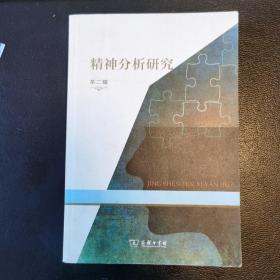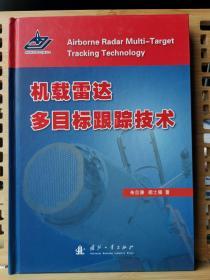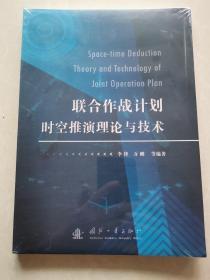
AdvancedModel-BasedChargingControlforLithium-IonBatteries(基于先进模型的锂离子电池充电控制)9787577207988
正版图书,可开发票,请放心购买。
¥ 110.05 7.0折 ¥ 158 全新
库存2件
广东广州
认证卖家担保交易快速发货售后保障
作者欧阳权,陈剑
出版社华中科技大学
ISBN9787577207988
出版时间2024-06
装帧其他
开本其他
定价158元
货号32116312
上书时间2024-07-30
- 店主推荐
- 最新上架
商品详情
- 品相描述:全新
- 商品描述
-
作者简介
欧阳权,自动化学院讲师,硕士生导师,博士毕业于浙江大学控制科学与工程专业,本科毕业与华中科技大学自动化专业。主要研究方向为无人机蜂群控制,无人机飞行控制,新能源系统集成与控制,智能控制,非线性控制等。发表相关SCI/EI论文27篇,授权专利1项,公开发明专利6项,其中包括8篇一作/学生一作国际顶级SCI期刊IEEE汇刊(1篇为高引论文)。
主持国家自然基金青年项目1项,江苏省双创博士项目(世界名校类<高校创新>),浙江大学工业控制国家重点实验室开放课题,曾参与包括国家自然基金重点项目,装发等在内多个项目,指导本科生获得全国大学生电子设计竞赛(无人机组),中国机器人大赛等并获奖。
曾经获得硕士研究生国家奖学金(2014)、博士研究生国家奖学金(2017)、浙江大学三好研究生(2014、2017)、浙江大学优秀毕业生(2018)和浙江省普通高等学校优秀毕业生(2018)等荣誉。 IEEEMembership,中国自动化学会会员,IEEEPES中国区技术委员会动力电池技术分委会理事。担任IEEETransactionsonIndustrialElectronics,IEEETransactionsonIndustrialInformatics,IEEE/ASMETransactionsonMechatronics,IEEETransactionsonVehicularTechnology等国际顶级SCI期刊的审稿人。
目录
Contents
1 Introduction .................................................. 1
1.1 Brief Introduction of Lithium-Ion Batteries . . . . . . . . . . . . . . . . . . 1
1.1.1 Comparison with Other Commonly Used Batteries . . . . 1
1.1.2 Applications of Lithium-Ion Batteries . . . . . . . . . . . . . . . . 2
1.2 Format Comparison of Lithium-Ion Batteries . . . . . . . . . . . . . . . . . 3
1.3 Electrochemical Mechanism of Lithium-Ion Batteries . . . . . . . . . 6
1.3.1 Composition of Lithium-Ion Batteries . . . . . . . . . . . . . . . 6
1.3.2 Charging-Discharging Mechanism . . . . . . . . . . . . . . . . . . 7
1.4 Motivation of Advanced Model-Based Battery Charging
Control . . . . . . . . . . . . . . . . . . . . . . . . . . . . . . . . . . . . . . . . . . . . . . . . . 9
1.4.1 Non-model-based Charging Control . . . . . . . . . . . . . . . . . 10
1.4.2 Model-Based Charging Control . . . . . . . . . . . . . . . . . . . . . 11
References . . . . . . . . . . . . . . . . . . . . . . . . . . . . . . . . . . . . . . . . . . . . . . . . . . . . 13
2 Lithium-Ion Battery Charging Technologies: Fundamental
Concepts . . . . . . . . . . . . . . . . . . . . . . . . . . . . . . . . . . . . . . . . . . . . . . . . . . . . . 15
2.1 Definitions Related to Battery Charging . . . . . . . . . . . . . . . . . . . . . 15
2.1.1 Basic Performance Parameters . . . . . . . . . . . . . . . . . . . . . . 15
2.1.2 State Indicators . . . . . . . . . . . . . . . . . . . . . . . . . . . . . . . . . . . 18
2.2 Charging Objectives and Constraints . . . . . . . . . . . . . . . . . . . . . . . . 20
2.2.1 Charging Objectives . . . . . . . . . . . . . . . . . . . . . . . . . . . . . . . 20
2.2.2 Safety-Related Constraints . . . . . . . . . . . . . . . . . . . . . . . . . 22
References . . . . . . . . . . . . . . . . . . . . . . . . . . . . . . . . . . . . . . . . . . . . . . . . . . . . 23
3 Lithium-Ion Battery Models . . . . . . . . . . . . . . . . . . . . . . . . . . . . . . . . . . . 25
3.1 Electrochemical Models . . . . . . . . . . . . . . . . . . . . . . . . . . . . . . . . . . . 25
3.1.1 Pseudo-Two-Dimensional Model . . . . . . . . . . . . . . . . . . . . 26
3.1.2 One-Dimensional Model . . . . . . . . . . . . . . . . . . . . . . . . . . . 28
3.1.3 Single Particle Model . . . . . . . . . . . . . . . . . . . . . . . . . . . . . 29
3.2 Equivalent Circuit Models . . . . . . . . . . . . . . . . . . . . . . . . . . . . . . . . . 30
3.2.1 Rint Model . . . . . . . . . . . . . . . . . . . . . . . . . . . . . . . . . . . . . . 30
3.2.2 Thevenin Model . . . . . . . . . . . . . . . . . . . . . . . . . . . . . . . . . . 31
3.2.3 PNGV Model . . . . . . . . . . . . . . . . . . . . . . . . . . . . . . . . . . . . 32
References . . . . . . . . . . . . . . . . . . . . . . . . . . . . . . . . . . . . . . . . . . . . . . . . . . . . 32
4 Neural Network-Based State of Charge Observer
for Lithium-Ion Batteries . . . . . . . . . . . . . . . . . . . . . . . . . . . . . . . . . . . . . . 35
4.1 Battery Model . . . . . . . . . . . . . . . . . . . . . . . . . . . . . . . . . . . . . . . . . . . 35
4.2 Neural Network-Based Nonlinear Observer Design
for SOC Estimation . . . . . . . . . . . . . . . . . . . . . . . . . . . . . . . . . . . . . . . 38
4.2.1 Neural Network-Based Nonlinear Observer
Design . . . . . . . . . . . . . . . . . . . . . . . . . . . . . . . . . . . . . . . . . . 38
4.2.2 Convergence Analysis . . . . . . . . . . . . . . . . . . . . . . . . . . . . . 40
4.3 Experimental Results . . . . . . . . . . . . . . . . . . . . . . . . . . . . . . . . . . . . . 42
4.3.1 Experiment for Parameter Extraction . . . . . . . . . . . . . . . . 42
4.3.2 Experiments for SOC Estimation . . . . . . . . . . . . . . . . . . . . 45
References . . . . . . . . . . . . . . . . . . . . . . . . . . . . . . . . . . . . . . . . . . . . . . . . . . . . 50
5 Co-estimation of State of Charge and Model Parameters
for Lithium–Ion Batteries . . . . . . . . . . . . . . . . . . . . . . . . . . . . . . . . . . . . . . 53
5.1 Battery Model . . . . . . . . . . . . . . . . . . . . . . . . . . . . . . . . . . . . . . . . . . . 53
5.2 Co-estimation of Model Parameters and SOC . . . . . . . . . . . . . . . . 55
5.2.1 On-line Battery Model Parameter Identification . . . . . . . 55
5.2.2 Robust Observer for SOC Estimation . . . . . . . . . . . . . . . . 59
5.2.3 Summary of the Overall SOC Estimation Strategy . . . . . 62
5.3 Experimental Results . . . . . . . . . . . . . . . . . . . . . . . . . . . . . . . . . . . . . 62
5.3.1 Experimental Results for Battery Model Parameter
On-line Identification . . . . . . . . . . . . . . . . . . . . . . . . . . . . . . 65
5.3.2 Experimental Results for SOC Estimation . . . . . . . . . . . . 68
References . . . . . . . . . . . . . . . . . . . . . . . . . . . . . . . . . . . . . . . . . . . . . . . . . . . . 74
6 User-Involved Battery Charging Control with Economic Cost
Optimization . . . . . . . . . . . . . . . . . . . . . . . . . . . . . . . . . . . . . . . . . . . . . . . . . 77
6.1 Battery Model and Constraints . . . . . . . . . . . . . . . . . . . . . . . . . . . . . 77
6.1.1 Battery Model . . . . . . . . . . . . . . . . . . . . . . . . . . . . . . . . . . . . 77
6.1.2 Safety-Related Constraints . . . . . . . . . . . . . . . . . . . . . . . . . 79
6.2 Charging Tasks . . . . . . . . . . . . . . . . . . . . . . . . . . . . . . . . . . . . . . . . . . 80
6.2.1 User-Involved Charging Task . . . . . . . . . . . . . . . . . . . . . . . 80
6.2.2 Economic Cost Optimization . . . . . . . . . . . . . . . . . . . . . . . 80
6.2.3 Energy Loss Reduction . . . . . . . . . . . . . . . . . . . . . . . . . . . . 81
6.2.4 Multi-objective Formulation . . . . . . . . . . . . . . . . . . . . . . . . 81
6.3 Optimal Battery Charging Control Design . . . . . . . . . . . . . . . . . . . 82
6.3.1 Optimal Charging Control Algorithm . . . . . . . . . . . . . . . . 83
6.3.2 Optimal Charging Current Determined by Barrier
Method . . . . . . . . . . . . . . . . . . . . . . . . . . . . . . . . . . . . . . . . . . 84
6.4 Simulation Results . . . . . . . . . . . . . . . . . . . . . . . . . . . . . . . . . . . . . . . 85
6.4.1 Charging Results . . . . . . . . . . . . . . . . . . . . . . . . . . . . . . . . . 86
6.4.2 Comparison with Other Commonly Used
Optimization Algorithms . . . . . . . . . . . . . . . . . . . . . . . . . . 86
6.4.3 Comparison with Charging Control Strategy
without Economic Cost Optimization . . . . . . . . . . . . . . . . 86
6.4.4 Comparison with Charging Control Strategy
Without Energy Loss Optimization . . . . . . . . . . . . . . . . . . 88
6.4.5 Simulation Results for Different Weight Selections . . . . 88
6.4.6 Simulation Results for Different User Demands . . . . . . . 89
6.4.7 Comparison with Traditional CC-CV Charging
Methods . . . . . . . . . . . . . . . . . . . . . . . . . . . . . . . . . . . . . . . . . 91
6.5 Experimental Results . . . . . . . . . . . . . . . . . . . . . . . . . . . . . . . . . . . . . 94
References . . . . . . . . . . . . . . . . . . . . . . . . . . . . . . . . . . . . . . . . . . . . . . . . . . . . 98
7 Charging Analysis for Lithium-Ion Battery Packs . . . . . . . . . . . . . . . . 101
7.1 Cell Equalization Analysis . . . . . . . . . . . . . . . . . . . . . . . . . . . . . . . . . 101
7.2 Multi-module Battery Pack Charger . . . . . . . . . . . . . . . . . . . . . . . . . 103
7.2.1 Model and Control of Battery Pack Charger . . . . . . . . . . 103
7.2.2 Performance Validation . . . . . . . . . . . . . . . . . . . . . . . . . . . . 106
7.3 Battery Pack Charging System Combining Traditional
Charger and Equalizers . . . . . . . . . . . . . . . . . . . . . . . . . . . . . . . . . . . . 107
7.3.1 Classification of Equalization Systems . . . . . . . . . . . . . . . 107
7.3.2 Bidirectional Modified C?k Converter-Based
Equalizer . . . . . . . . . . . . . . . . . . . . . . . . . . . . . . . . . . . . . . . . 110
7.3.3 Modified Isolated Bidirectional Buck-Boost
Converter-Based Equalizer . . . . . . . . . . . . . . . . . . . . . . . . . 115
References . . . . . . . . . . . . . . . . . . . . . . . . . . . . . . . . . . . . . . . . . . . . . . . . . . . . 119
8 User-Involved Charging Control for Battery Packs:
Centralized Structure . . . . . . . . . . . . . . . . . . . . . . . . . . . . . . . . . . . . . . . . . 121
8.1 Battery Pack Model and Constraints . . . . . . . . . . . . . . . . . . . . . . . . 121
8.1.1 Battery Pack Model . . . . . . . . . . . . . . . . . . . . . . . . . . . . . . . 121
8.1.2 Charging Constraints . . . . . . . . . . . . . . . . . . . . . . . . . . . . . . 122
8.2 User-Involved Charging Control Design for Battery Packs . . . . . . 123
8.2.1 Charging Objectives . . . . . . . . . . . . . . . . . . . . . . . . . . . . . . . 123
8.2.2 Optimal Battery Pack Charging Control Design . . . . . . . 126 <
— 没有更多了 —





















以下为对购买帮助不大的评价